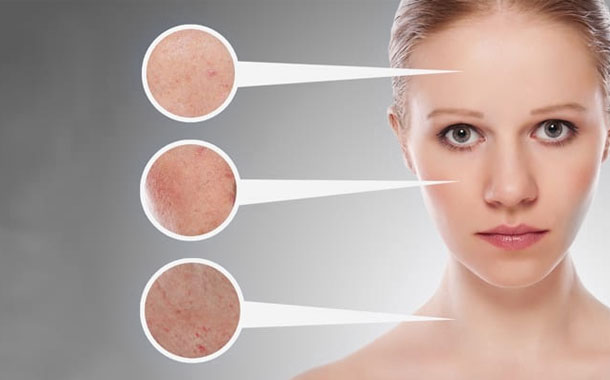What Type Of Acne Do You Have – And How To Handle Them
Acne is a common skin condition that affects both men and women. It is commonly believed that acne strikes only during the teen years, but truth is, it can appear during adulthood too. This type of acne is called ‘Adult Acne’.
Having acne is indeed annoying and is found to make a negative impact on one’s life: it may influence our self-image in a negative way and makes us feel embarrassed in front of other people.
So how to get rid of them?
There are different types of acne and each one requires specific treatment and products.
Let’s see what types of acne exist and how to handle them:
- Whiteheads
These white spots on the skin are actually oil glands. They appear as a result of excessive oil production: the glands get clogged with oil and covered by skin. It makes the oil trapped between skin layers and thus, cannot reach the surface.
Tips for prevention:
* Clean your face at least 2 times a day to keep excess oil away.
* Try to find a water-based moisturizer.
* Avoid junk food and deep-fried food generally, as it contributes to oilier skin. - Blackheads
These dark, tiny dots are a very common type of acne, mostly to be found on the nose and nasal area. They are basically blocked pores just like whiteheads. The difference is that blackheads have an opening to the surface of the skin, meaning the air can enter and oxidize the oil inside the pore, turning it darker.
How to handle:
* Exfoliation is the first and foremost step that you cannot skip.
* Deep cleansing pore strips can work wonder. - Papules
Papules are small red dots or bumps that may be sensitive to touch. These are the types of inflammatory acne that are the cause of the work of bacteria. They don’t necessarily contain pus.
What to do with them:
* The goal is to calm your skin, rather than dry it out. You can calm down the inflammation by using topical cortisone cream from the drugstore.
* Look for products with soothing ingredients like kaolin clay, white tea, green tea, and sulfur. - Pustules
Pustules are inflamed acne filled with pus. They appear as white spots, usually with a pale yellow center. As tempting as it may be to pop them, try to refrain from it – since they are inflamed, popping them can lead to permanent scarring.
How to handle them:
* Look for spot treatments with antibacterial, antiseptic ingredients like sulfur and zinc oxide, and drying agents like camphor. - Cystic Acne
This particular type of acne is huge, pus-filled and deep. They are severely inflamed and notoriously tough to treat. They are likely to leave scars and blemishes.
What to do:
* Well, this is the type of acne where you should consider paying your dermatologist a visit.
* However, as for prevention: if you are prone to cystic acne in the chin and jawline are, cutting back on your dairy intake can help immensely – as quite often, it can be its cause.
Although different acnes can require different treatments, there are some powerful tips that can work wonders on your general skin condition. So here are some Glowing Skin Tips from us to you…to get the look that you have always dreamed of:
- Drink plenty of water, eat fresh fruits and vegetables – or just squeeze them into a nourishing, delicious smoothie.
- Eat clean and include healthy fats in your diet – like avocados, clove oil, nuts and seeds.
- Never ever sleep with makeup on – When you get back home, make sure you give your skin a rest: remove your makeup, cosmetics and sunscreen. Therefore, your pores will be able to breath again freely. Plus, a good makeup remover will also nourish your skin
- Exfoliate, exfoliate, exfoliate – Scrub your skin with a gentle exfoliator once a week. This will help remove dead skin cells and make your skin fresh and glowing.
- Reduce stress – Multiple studies have linked stress to the increase of acne production on the skin. Getting more sleep, meditating, practicing yoga, engaging in physical activity can all help reduce stress in our lives.




